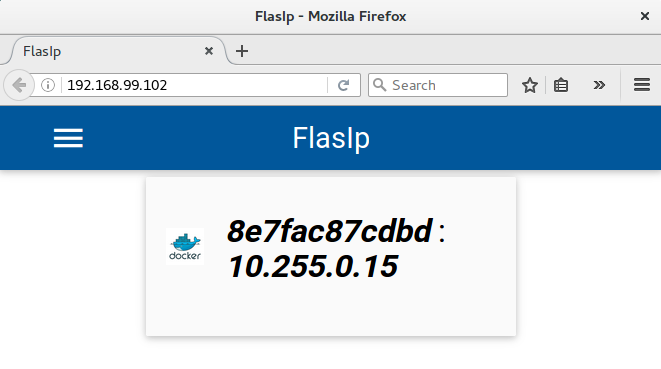Docker Swarm Mode and Machine
In this post we will be making use of Docker Engine 1.12 Swarm mode for natively managing a cluster of Docker Engines called a Swarm.
We will be using docker-machine to create our nodes and deploy a simple Flask application that returns the hostname and ip address of the container/host it’s running on.
PrerequisitesPermalink
docker -v
Docker version 1.12.0, build 8eab29e
docker-machine -v
docker-machine version 0.8.0, build b85aac1
Creating our nodesPermalink
We will create our nodes using docker-machine:
for node in manager-1 worker-1 worker-2; do
docker-machine create -d virtualbox $node
done
Initializing our managersPermalink
Here, we are creating a swarm on the manager-1 node and telling it to advertise it’s address using the --advertise-addr flag.
eval `docker-machine env manager-1`
docker swarm init \
--advertise-addr `docker-machine ip manager-1`:2377
You should see the below output after executing the swarm init command
To add a worker to this swarm, run the following command:
docker swarm join \
--token SWMTKN-1-44bmnrfrkfpyb4lgryudjd4uaamkozpien1lr6oddhdiq995pc-0mwe6lfak4wjy828vmt63t9ot \
192.168.99.102:2377
NOTE: Your --token will differ.
Joining our workersPermalink
Here, we add worker nodes to our swarm.
WORKER_JOIN_TOKEN=`docker swarm join-token -q worker`
for worker in 1 2; do
eval `docker-machine env worker-$worker`
docker swarm join \
--token $WORKER_JOIN_TOKEN \
`docker-machine ip manager-1`:2377
done
Let’s execute docker node ls on our manager to confirm
eval `docker-machine env manager-1`
docker node ls
You should see the following
ID HOSTNAME STATUS AVAILABILITY MANAGER STATUS
01x30nznfg6tv95jl1uyr0wrf * manager-1 Ready Active Leader
0w36v8c8z9vxya9p9vuwrdi9o worker-1 Ready Active
e0fk1094a8ihzp1ien27cogku worker-2 Ready Active
The * tells us which node we are currently using and MANAGER indicating manager-1 is the Leader.
Deploying our servicePermalink
docker service create --name flasip \
--replicas=1 \
-p 80:5000 \
thoba/flasip:latest
The above command creates a single instance (--replicas=1) service named flasip (--name flasip) and mapping port 80 to 5000 (-p 80:5000) using the thoba/flasip:latest Docker image.
To check for running services, type the following commands:
docker service ls
We can use docker service scale SERVICE_NAME=NUM_TASKS to scale our service to the desired number of tasks:
docker service scale flasip=6
flasip scaled to 6
To see which node(s) these are deployed/running in, execute:
docker service ps flasip
Get the manager’s IP by executing the following command:
docker-machine ip manager-1
192.168.99.102
To access the flasip service, point your browser to 192.168.99.102 and ![]()

Internally, Docker makes use of Linux IPVS, an in-kernel Layer 4 multi-protocol load balancer. With IPVS routing packets inside the kernel, swarm’s routing mesh delivers high performance container-aware load-balancing.
Refresh the browser to see the load balancing feature.
Hope someone finds this helpful. ![]()

Leave a comment